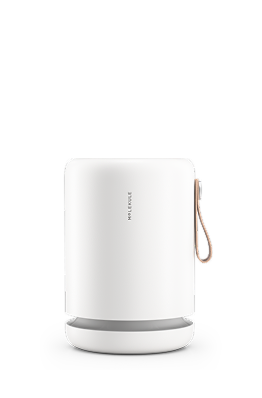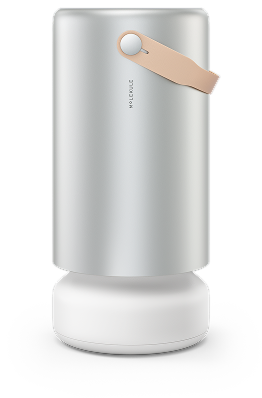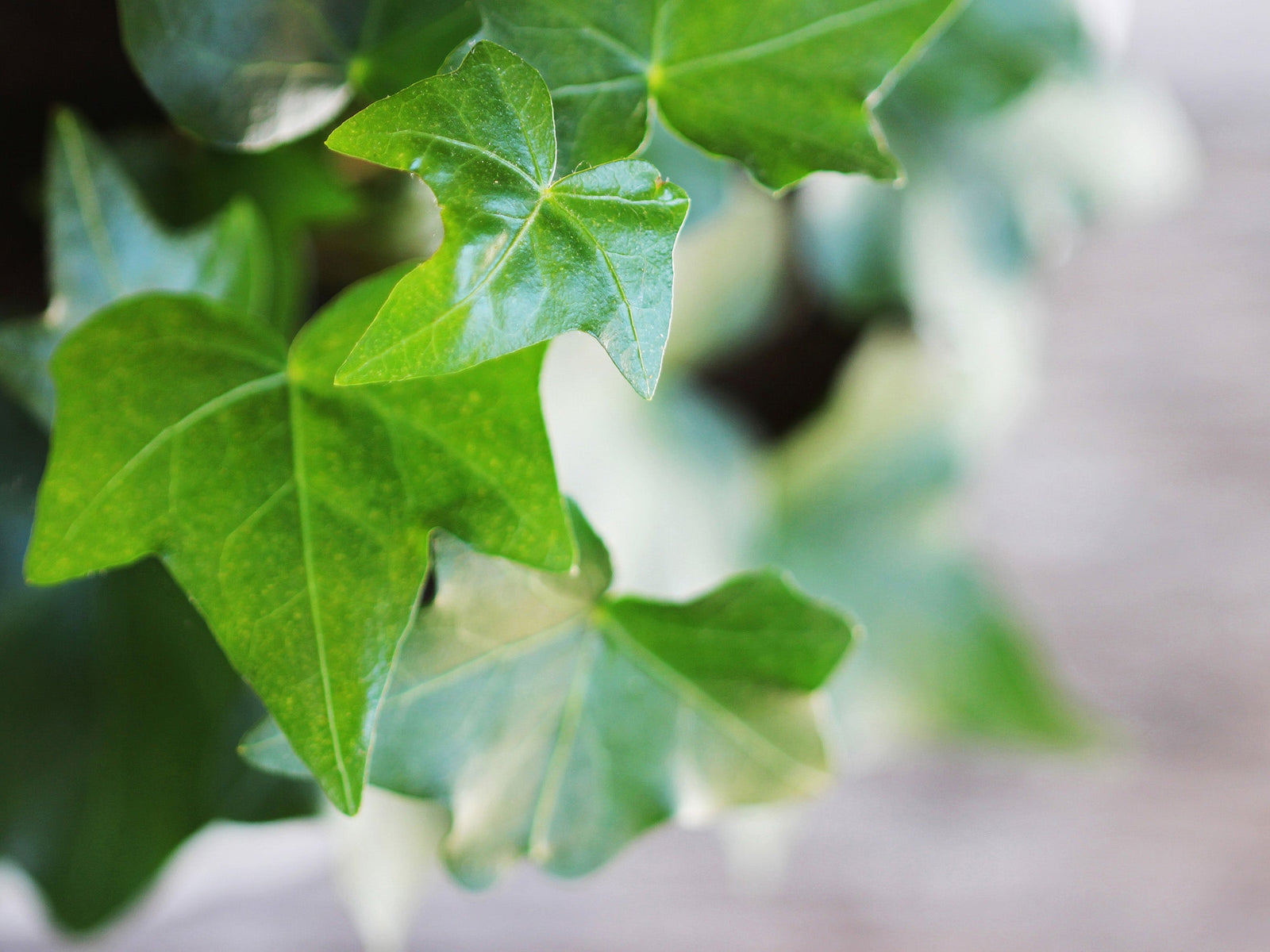Admired for their potential ability to pull harmful gases out of the air and into their leaves and roots, indoor plants are a commonly recommended solution for people who want to improve the air quality in their home. It does not hurt that these plants make for a nice addition to the decor—greenery always livens up a space.
One plant recommended often is English ivy, despite the controversy that surrounds the safety and effectiveness of the vine to improve air quality. Since the aggressive vine has some harmful (even toxic) components, there has been debate about whether it is worth it or not to have English ivy as a houseplant. If it is, do the potential benefits for reducing indoor air pollution with English ivy plants outweigh the risks?
Below, we will explore everything you need to know about English ivy — what it is, whether it actually helps purify the air in your home, especially compared to an air purifier, and how to care for it if you do bring it indoors.
What is English Ivy?
Also known as Hedera helix, English ivy is a perennial vine that originated in Europe (hence the name) centuries ago. It was introduced to North America by colonial settlers and quickly became recognized for its aggressive spreading — it can reach between 6 and 9 inches in height off the ground and spread up to 100 feet. At its most mature, English ivy has oval leaves and produces yellow-green flowers in the fall, which turn into black and blue berries in the spring.
You have probably seen its thick, glossy leaves growing up the sides of brick or stone walls, or wrapped around the trunk of a tree. You may have even regarded English ivy as pretty. Many people would agree with you. However, some regions of the United States regard English ivy as an invasive, noxious weed because it takes over other plants that are native to the area. Since there is no natural enemy to English ivy, it is left to grow however it wants. In Oregon, it is actually illegal to buy, sell, or transport English ivy because of this.
Does English Ivy Really Improve Indoor Air Quality?
While plants hardly seem like a controversial topic, English ivy is just that. While some experts say that climbing ivy damages the walls and trees it covers, others say the ivy protects them. There is no doubt that both observations are at least partially accurate. Though you may not be able to plant English ivy outdoors, you can grow it indoors.
The big question is this: Does English ivy actually improve indoor air quality?
While the National Park Service is not a fan of English ivy and advises (strongly) that it should not be planted outside, it is quite a popular houseplant. This might be due to a NASA study that evaluated its ability (among other indoor plants) to reduce indoor air pollutants. Within a small test chamber, English ivy, along with the other plants, was reported to reduce levels of formaldehyde, benzene, and trichloroethylene from the air—volatile organic compounds (VOCs) that are known carcinogens. This NASA study has been popularized in the media to claim that indoor plants can remove indoor air pollutants. Though dated, it is still one of the most comprehensive studies done on how plants can help improve indoor air quality.
Yet the EPA is skeptical. The agency says that there is no current evidence that a normal number of houseplants can remove significant amounts of pollutants in homes.
A researcher who has found similar results as the NASA study in plants’ ability to remove organic chemicals from the air cannot even say the findings are conclusive. Stanley J. Kays from the University of Georgia is quoted as saying, “It is not yet possible to project the true potential of plants for purifying indoor air. At this time the role of plants, though appearing
English ivy can reduce particles of fecal matter and mold
Experimental results presented to the American College of Allergy, Asthma, and Immunology back in 2005, evaluated how well English ivy could reduce levels of fecal matter and mold. Researchers put moldy bread and dog feces in two separate containers and measured the levels of each in the air of the containers. They then added English ivy to each container and measured the airborne particles 6 and 12 hours later.
According to WebMD: “Six hours later, 60% of the airborne-mold had vanished from the air around the ivy. Almost as much of the airborne feces were also gone from the air (58%). After six more hours, the air was even cleaner. More than three-quarters of the airborne mold was gone (78%). So were nearly all of the airborne feces (94%), the study shows.”
While English ivy may be able to pull fecal matter, mold spores, and other indoor air pollutants from very small, contained spaces (like test containers and chambers), it may not be effective at purifying the air inside a home. It also won’t remove certain allergens — like pet dander, pollen, or dust. However, there are certain air purifiers designed specifically to destroy mold and help relieve allergies which may be worth looking into.
Should You Get English Ivy for Your Home?
Even if English ivy may potentially remove some indoor air pollutants, should you bring it into your home? That answer depends on several factors, including whether you have pets or children. The two main reasons people warn against bringing English ivy into the home are:
- English ivy is poisonous to humans and pets — The leaves and berries of English ivy contain glycoside hederin, which can cause side effects that range from mild (diarrhea and dilated pupils) to severe (difficulty breathing, fever, and lack of coordination). While an adult would know better than to snack on a houseplant, young children and pets don’t.
- When touched, English ivy can cause dermatitis — Dermatitis is a general term used to describe skin inflammation, characterized by an itchy rash on swollen, red skin. The confirmed cases of allergic contact dermatitis typically occur after someone handles English ivy without a protective barrier between the plant and their skin. Not everyone who touches English ivy will experience dermatitis but it’s a risk that should be considered.
How to Grow and Care for English Ivy in Your Home
If you do decide to get an English ivy plant to help purify the air in your home, here are some helpful pointers for growing and caring for your plants.
- Ivy should be planted in a pot with drainage
- The soil of the plant should be dry to the touch between waterings
- During spring, summer, and fall, English ivy should be fertilized monthly
- Trim the vines if they get too long (be sure to wear gloves to protect your skin)
- English ivy needs bright sunlight to stay healthy
- The vines prefer to be kept at cooler temps and enjoy humidity (you will still want to make sure you’re keeping your home at optimal humidity levels to prevent mold growth)
- English ivy vines attach to surfaces (like walls) with tiny roots — be sure not to let your vines grow on anything they could damage
Since English ivy plants don’t require much attention, they tend to be a hardy plant that can withstand even forgetful owners. The most important thing to remember is that these vines must be kept out of reach of pets and small children.
While NASA’s research certainly points us in the right direction and further research confirms that there is some validity to their findings, there is no definitive answer regarding whether English ivy is a reliable solution for improving indoor air quality. Instead, it should be used as one component of a more comprehensive strategy — one that includes removing products that emit volatile organic compounds (VOCs) from your home and providing adequate ventilation.







